A small introduction
Although I’m old enough to have most of my life’s important moments captured on film, it wasn’t until digital cameras became widely available in the early 00’s that I started taking photography a bit more seriously. Then about 4 years ago I came by a small inheritance of vintage film cameras, given to me by a close relative after his father (who was an avid camera collector) passed away. He kept the Leicas and the Rolleiflexes, but he was kind enough to let me have the Spotmatics, the Canonets and the Yashicas (among others) which literally changed the way I saw photography until then. I often fiddled with my Dad’s Trip 35 as a child (a camera I still have and use occasionally) but those beasts were completely different. It was love at first sight and as soon as I had some of them serviced and ready to shoot, my Nikon D90 found its way to someone else’s camera bag.
Why here?
I started following “35mmc” a few months ago and since then I’ve been visiting on an almost daily basis. I find Hamish’s approach to the whole project very interesting, especially his willingness to expand the blog by inviting other people to contribute. Since I started shooting film, a big part of my photos have been made with cheap, plastic point ‘n shoot compacts which exert a special attraction on me, equal to that exerted by the full-metal vintage SLRs and rangefinders I also like to use. Hopefully, sometime soon I’ll be able to contribute something to the M-Leica section, but for now I’d like to share my feelings for one of my favorite P&S compacts which also happens to be one of the cheapest and simplest film cameras I’ve used so far.
The Canon Sure Shot AF-7 (or is it AF-8?)
There is a little bit of confusion online regarding the actual name of this particular Sure Shot. My camera is clearly marked “Sure Shot AF-7”, but if you google that, you’ll most likely come up with a similar but definitely different-looking camera. Now, if you google “Sure Shot AF-8” my camera pops up. I have no idea how this mix-up came to be, my camera isn’t pictured at all on Canon’s online camera museum and I have found online pictures of it marked both “AF-7” and “AF-8” so be careful if you set out to buy one.
A spec sheet a little too thin
When setting out to review a P&S camera (or any camera for that matter) one inevitably starts by taking a look at the spec sheet, although I’ve come across several cameras with daunting spec sheets full of impressive features that would make a modern film SLR blush, but which ultimately felt completely bland during actual use.
If someone took a look at the spec sheet of the AF-7/8 they would surely be left unimpressed: The lens is a fixed triplet with a focal length of 35mm and a slow max. aperture of f4.5. The shutter speed range is pretty limited from 1/45s to 1/180 which combined with a min. aperture of f11, translates to a pretty limited exposure range of 10-16 EV.
Obviously this means that correct exposure will frequently rely on exposure latitude of the used negative film, in fact the instruction manual clearly warns against the use of slide film. Film speed is set automatically via DX coding and is limited to 100 and 400 only. Despite the camera having been released during the late ‘90s, the AF system is pretty basic offering only 3 steps with a minimum focusing distance of 0.8m. A 3-step AF focus system surely sounds rudimentary, but with a max. aperture of f4.5, depth of field is unlikely to ever be shallow enough to embarrass it.
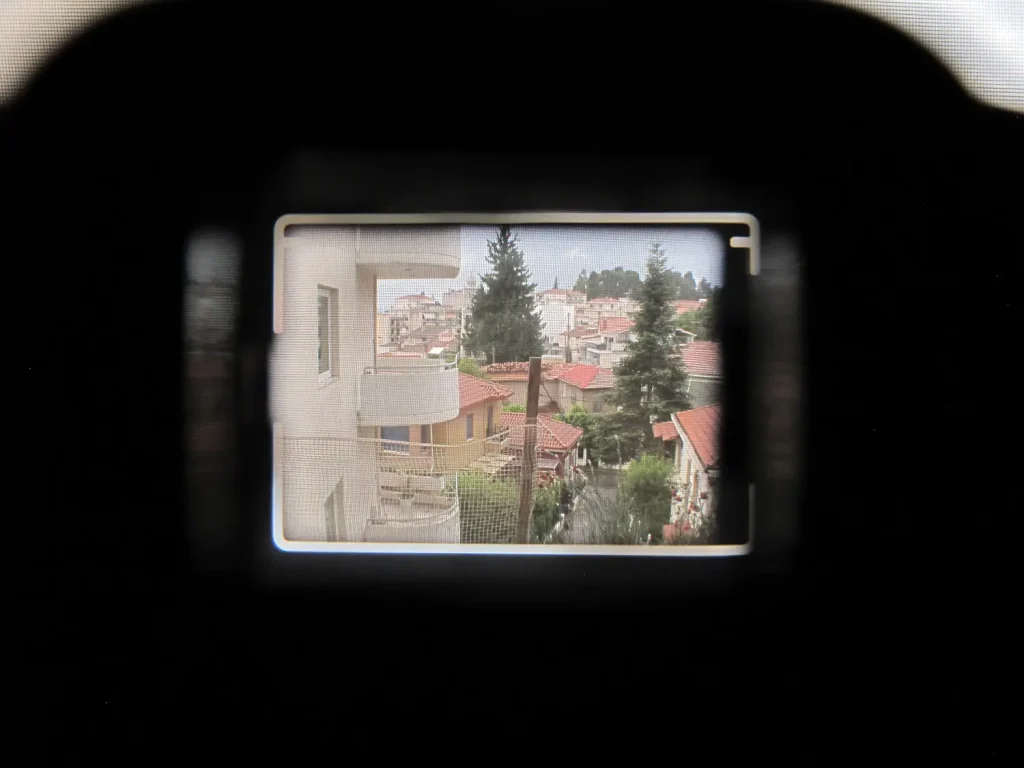
The little Sure Shot in use
So is there any point in going any further with this apparently very simple camera? Well, after shooting with nearly 50 different P&S compacts during these past 4 years, I have come to the conclusion that you should never write a camera off before actually testing it in the field, no matter how mediocre it looks on paper. Many plain-looking cameras have several aces up their sleeve that can neutralize any negative preconceptions and the Sure Shot AF-7/8 is one of them.
Picking the camera up, it feels really light. It is compact but not uncomfortably so, and the brick-like shape with the matte finish and the small ridge on the front provide a really steady grip. Nothing like the slippery “wet bar of soap” (© Dan James) feeling I get from the mju-II.
The viewfinder
Bringing it up to eye level, the little Sure Shot scores big as the viewfinder is simply AMAZING: Big and bright with parallax correction marks, it provides 80% coverage with x0,68 magnification and reminds me a lot of the fantastic VF of the Agfa Optima Electronic series. Towards the end of the film era, almost all manufacturers offered simple P&S cameras with big finders, probably aiming at older users with poor eyesight that were reluctant to turn to digital, but this one dwarfs any other camera I’ve used in that department. People that wear glasses will find the AF-7/8 very easy to use, as even with glasses on, the whole frame area is clearly visible.
Information in the viewfinder is minimal, there is only a green LED which lights up when focus is locked, a process that is really fast given the fact that the AF system only has 3 steps. Sadly, there is no proximity warning, i.e. the light doesn’t blink when the subject is too close, so be careful to respect the given min. focusing distance of 0.8m. At first I thought that the AF was faulty, but it is clearly stated in the manual that the LED doesn’t blink when subjects are too close.
Controlling the camera
The second feature that dominates the camera’s user interface is the big mode dial on the front. Yep, that’s right. A big, clicky dial controls all the camera’s functions. No tiny soft-touch switches, no faded LCD displays, no need for repeated presses of a multifunctional button to reach a hidden flash mode.
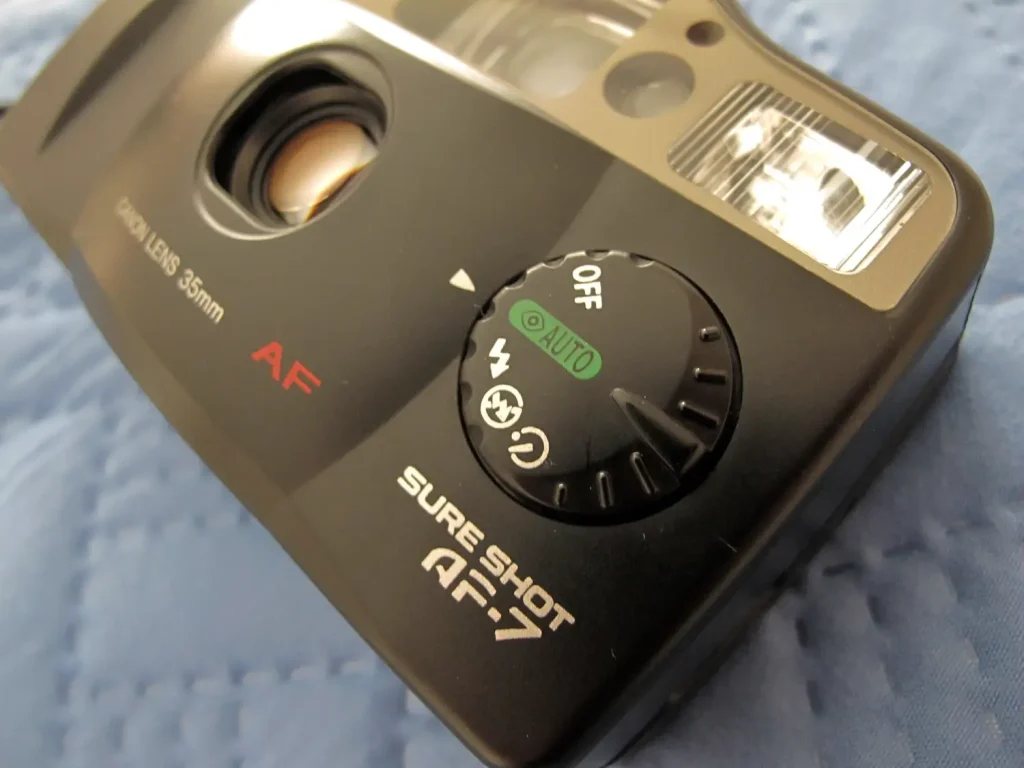
There are 5 positions the dial can be set to: The “OFF” position which keeps the camera turned off with the lens shield closed, the “Red-eye AUTO” position where the camera is turned on, the lens shield is retracted and the exposure system automatically decides whether the flash (which features red-eye reduction) needs to fire or not. Beware that in this mode, the minimum shutter speed is 1/100s, so it’s likely that the flash will tend to fire a lot when slow film is used under less than ideal lighting conditions. The third position is a “flash on” position which will force the flash to fire regardless of the lighting conditions (useful for backlit subjects).
The fourth position is the “flash off” position where the flash is turned off AND STAYS THAT WAY FOR AS LONG AS YOU LIKE. No need to reset the flash after each shot is fired, no automatic shut-down of the camera after a couple of minutes if you decide to keep it turned on in your pocket to avoid the flash resetting to auto. Pure, simple, mechanical control of the flash function, just like most of us want it to be. In this mode, minimum shutter speed is 1/45s so with 400 ASA one may be able to get away with the occasional indoor shot without resorting to flash. I must say that a LED warning in the VF for the need for flash to guard against underexposure under borderline conditions when in flash off mode would have been welcome . The fifth position on the dial is reserved for the self-timer mode which provides a shutter release delay of 10 seconds. The “other” Sure Shot AF-7 you may come across while browsing the net, does not have the mode dial at all, flash control and self timer being handled by two dreaded soft-touch buttons on the front of the camera.
Power
The power necessary for the exposure system and film advance and rewind is provided by two plain alkaline AA batteries. No need for expensive special lithium batteries, of which you always have to carry a spare, just two common cheap batteries available in the grocery store of the remotest village you may find yourself in. According to the manual, two fresh alkaline batteries will give you enough juice for 50(!) 24-frame rolls with the flash used for 50% of the shots, based on the “standard Canon measurement system” which I personally find very optimistic, but will probably never be able to actually test.
In the street
In practice, despite its chunky appearance, the camera can slip in and out of a coat pocket very quickly and securely with minimal risk of slipping from your hands. The big finder allows for fast aim, no need to lose time aligning your visual axis with a squinty VF that tends to black out at suboptimal viewing angles. The shutter button is big, rubbery and perfectly placed with two clearly distinct levels of pressure required to engage the AF system and release the shutter respectively. Shutter lag is very short, perhaps not as short as that of the Oly AF-10 Super, but much shorter than that of more popular and expensive P&S cameras I’ve used. Film advance is much less noisy than earlier film compacts, as by the end of the ‘90s camera motors had gradually become quiet enough to be easily drowned by traffic noise and the AF-7/8 is a good example of that improvement.
Performance
So the little Sure Shot ticks all my boxes in the user interface department, but at the same time its spec sheet certainly justifies some degree of hesitance among most experienced users, leaving image quality as the decisive factor tipping the scale in its favor or against it.
I’ve shot two rolls of film with the camera, the first one being a roll of Agfaphoto CT Precisa 100 slide film which was cross-processed in C-41 chemicals and the second one a roll of Agfa APX-100 B&W film which I developed myself in Kodak’s HC-110 developer. Both films were scanned with a professional Noritsu LS-1100 scanner at the local photo lab.
The images are there for you to judge lens performance, but I would like to add a few comments of my own: Firstly, I think the manual’s warning against the use of slide film should be respected. Despite the CT Precisa’s speed being within the ASA range of the camera’s exposure system, the slow top shutter speed of 1/180s and relatively large minimal aperture of f11 led to severe overexposure of many frames that were shot under strong sunlight. Exposure latitude of slide film is really minimal so the exposure range limitations of the camera became readily apparent, something that probably wouldn’t have been the case if negative film had been used. However, the well exposed frames were sharp and contrasty with minimal fall-off at the corners and good flare control, all consistent with the good optical reputation of most Sure Shots in the ‘90s.
The camera handled the Agfa APX-100 much better and I was really impressed by the little triplet: Sharp, contrasty pics with some corner smearing creeping up under suboptimal conditions (i.e larger apertures used) but really up there with most of my more expensive P&S compacts which lack all the ergonomic perks of this little shooter.
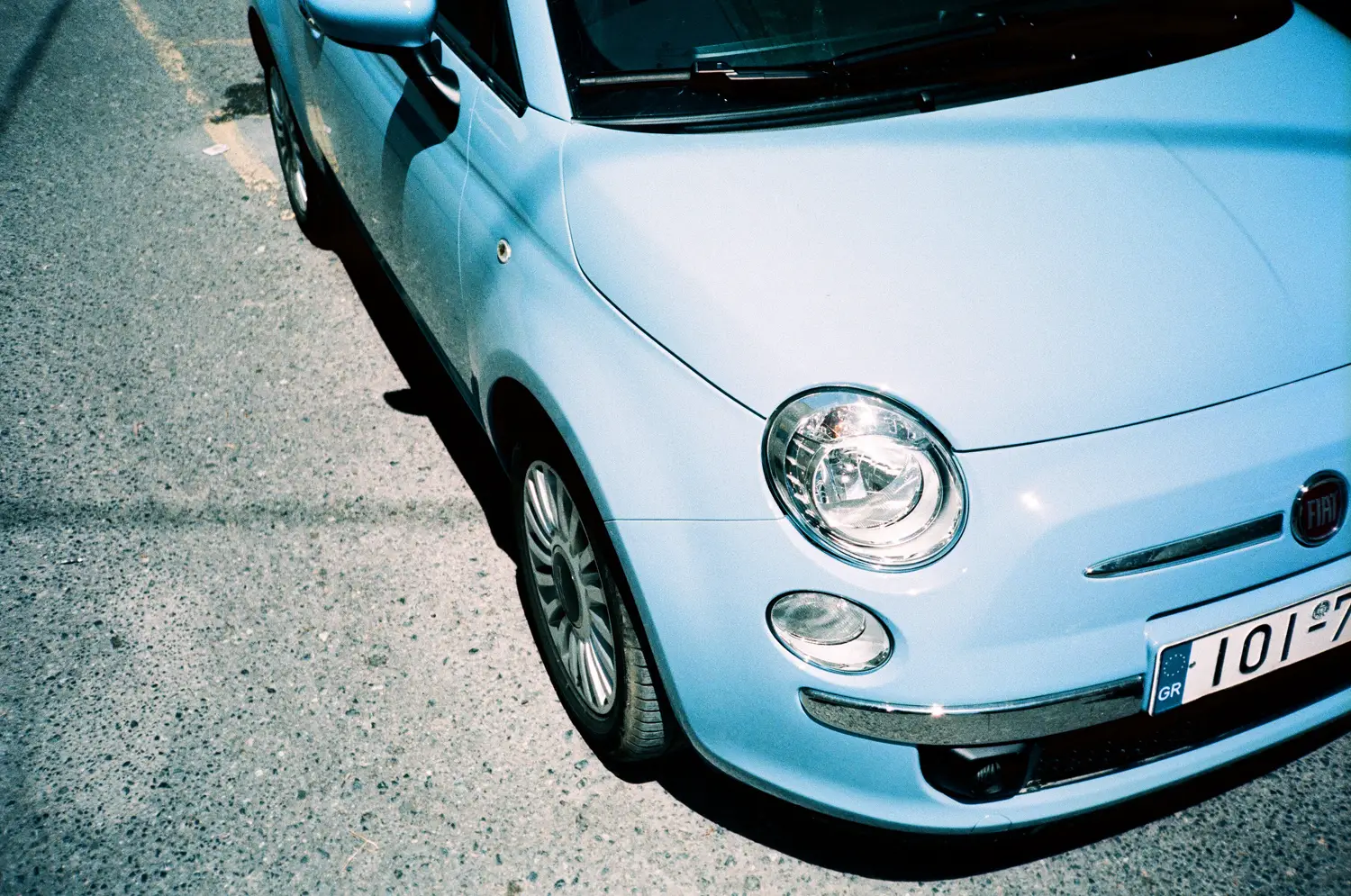
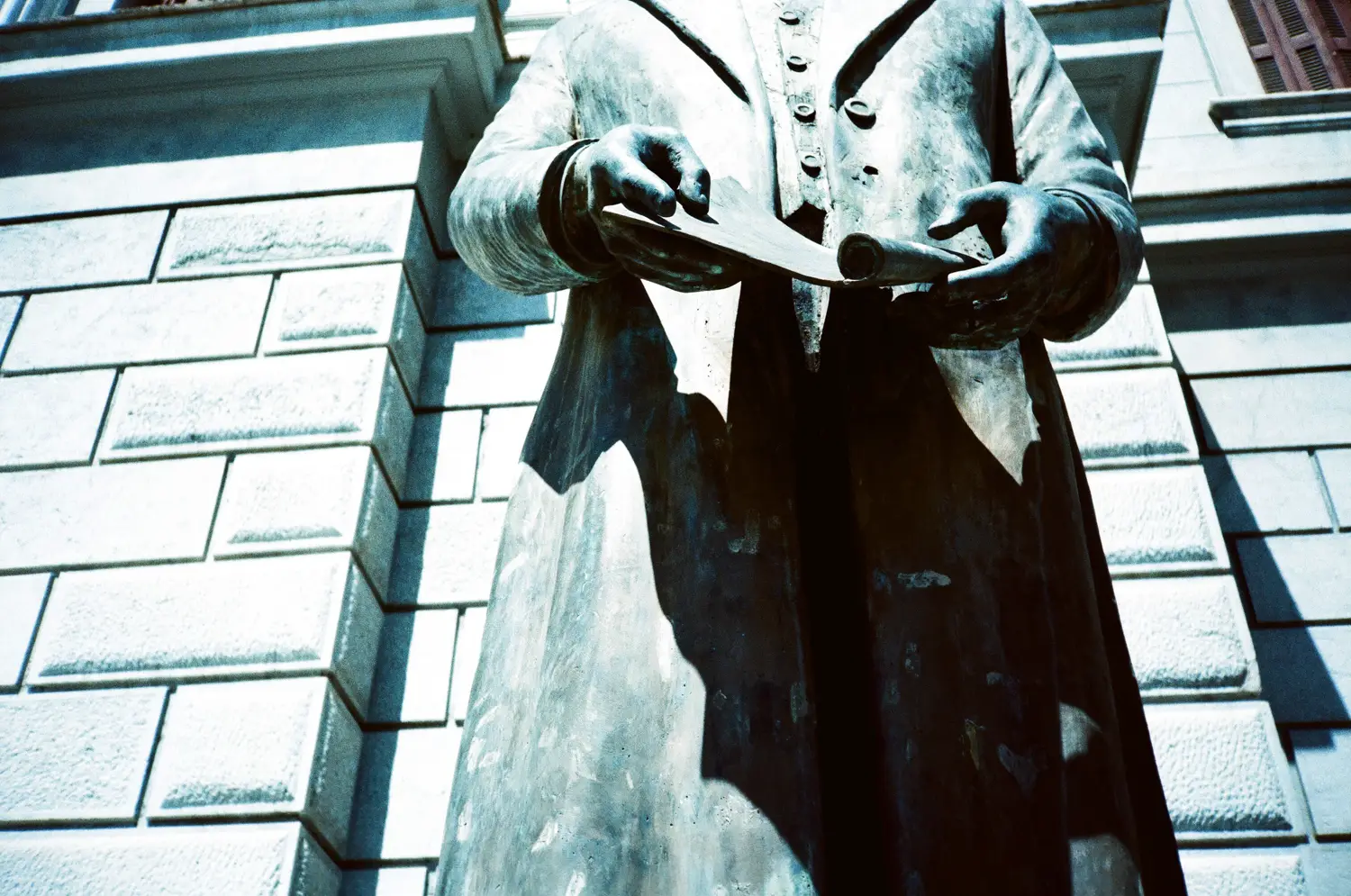
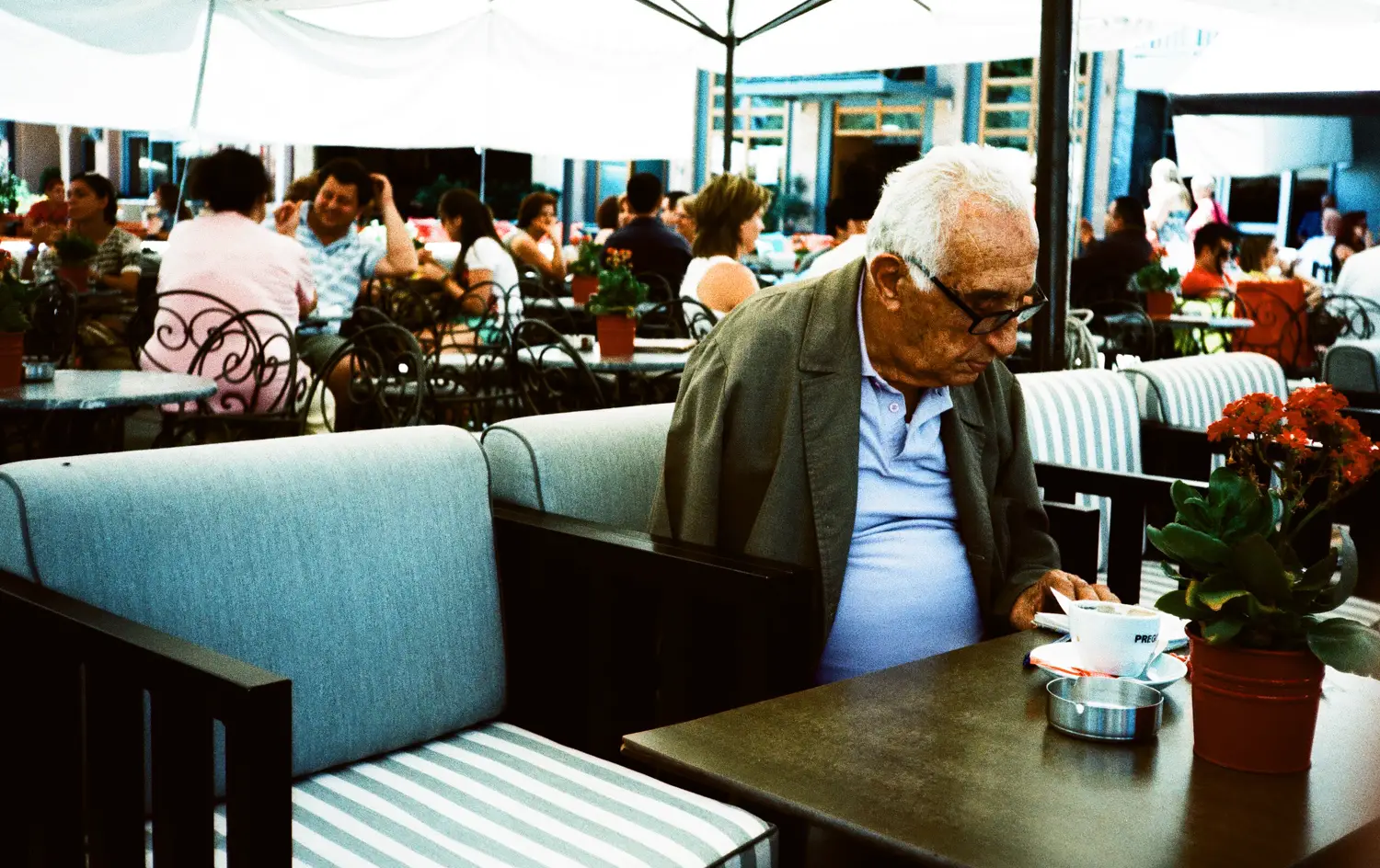
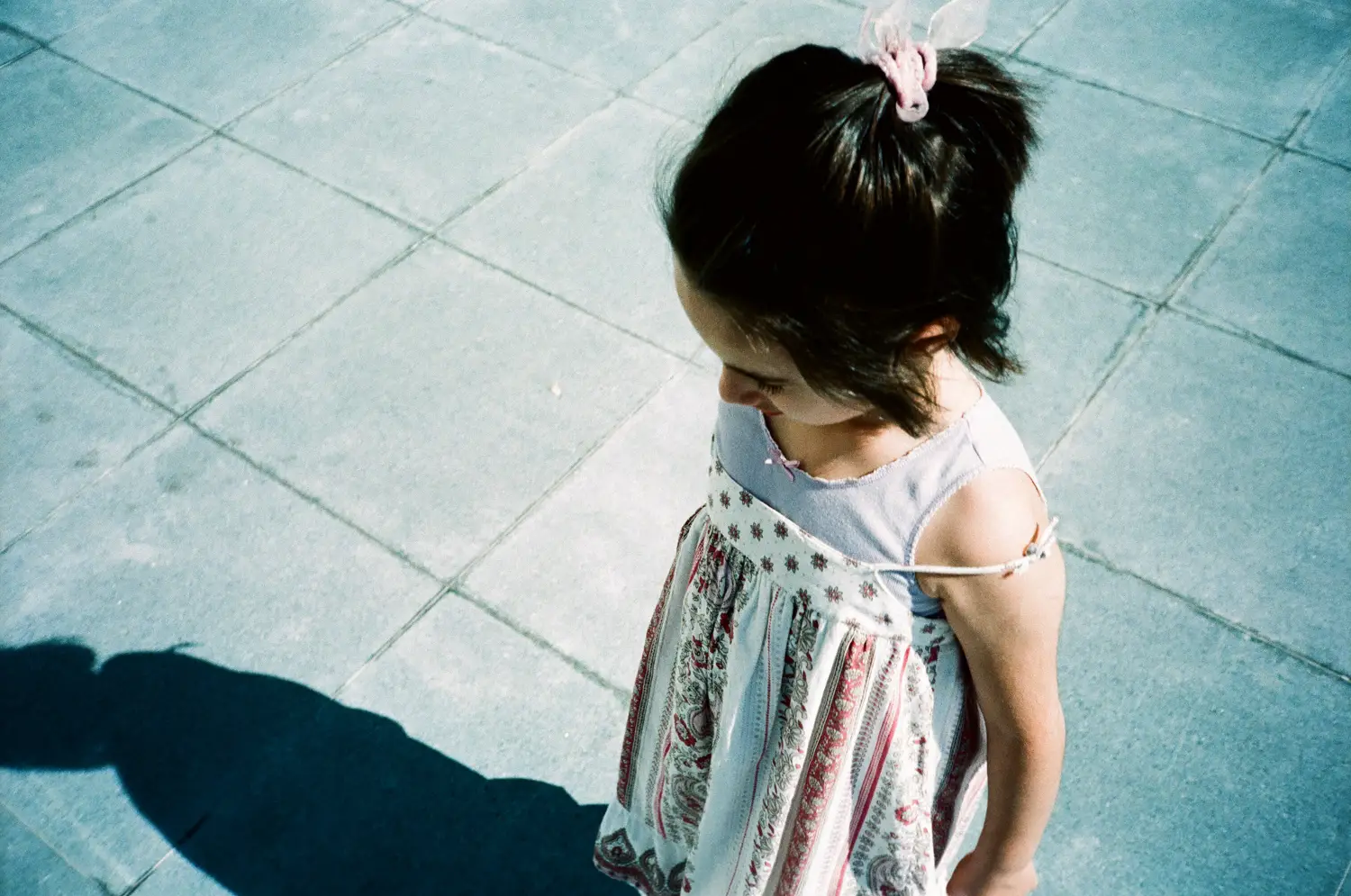
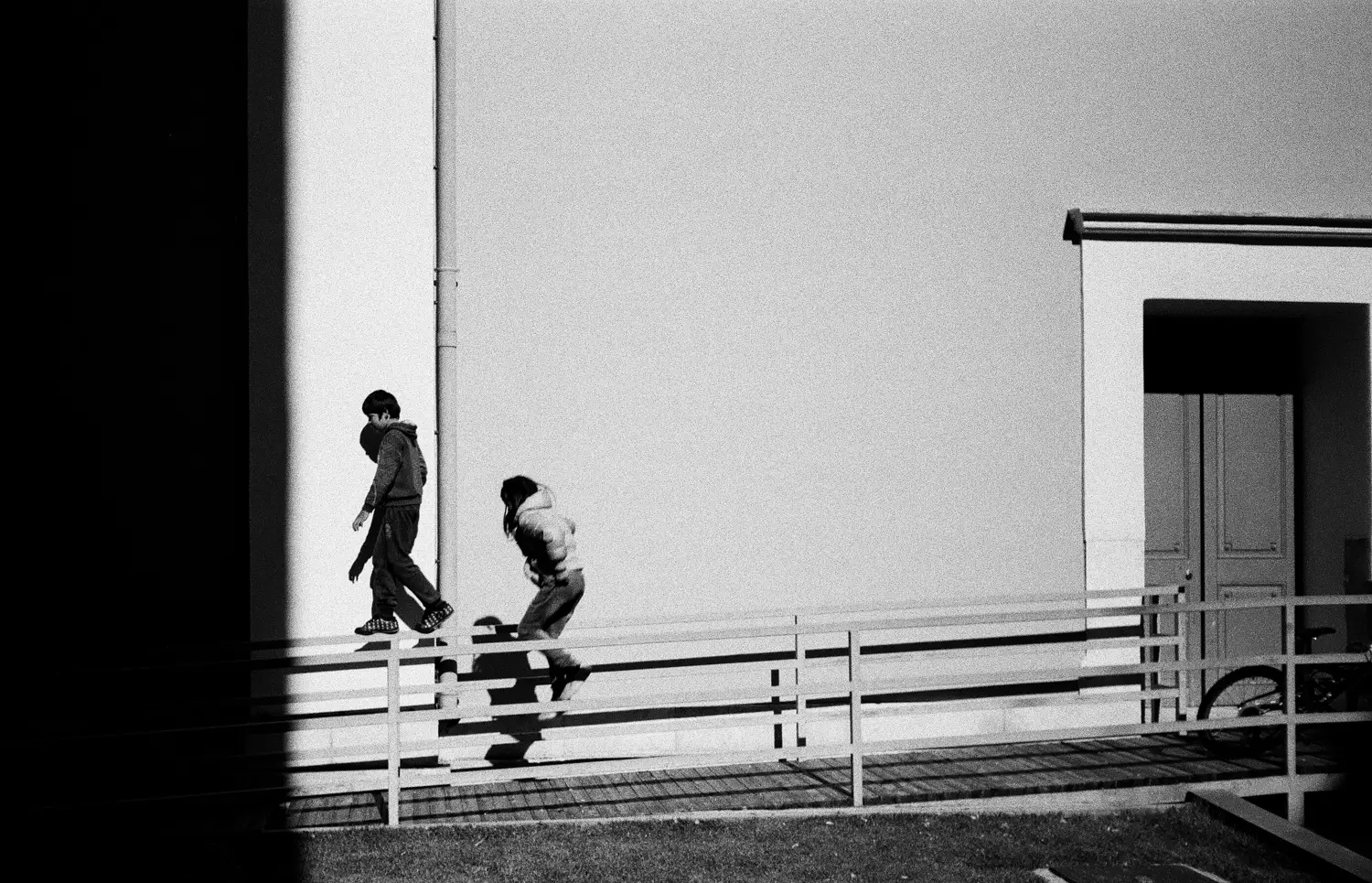
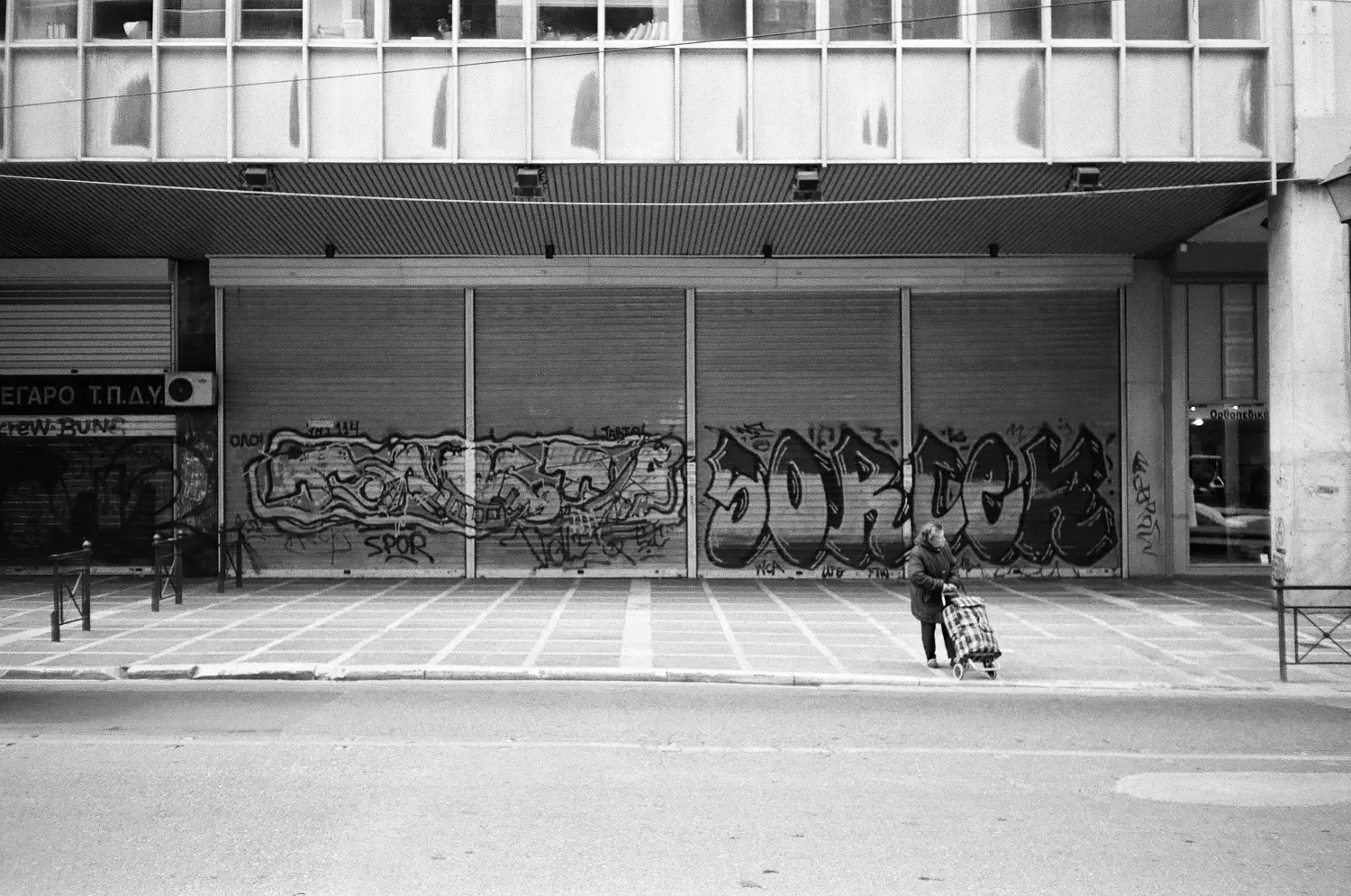
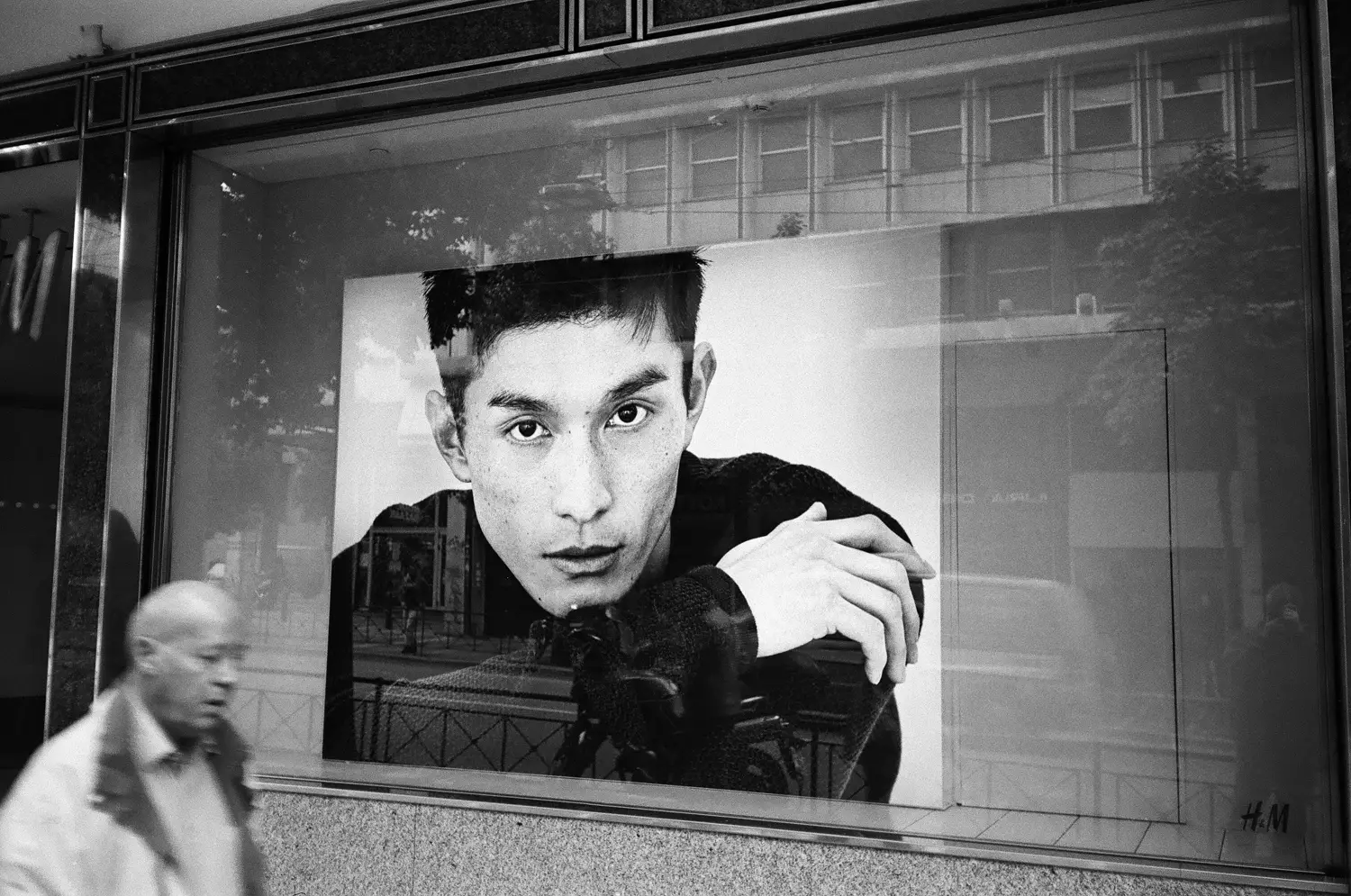
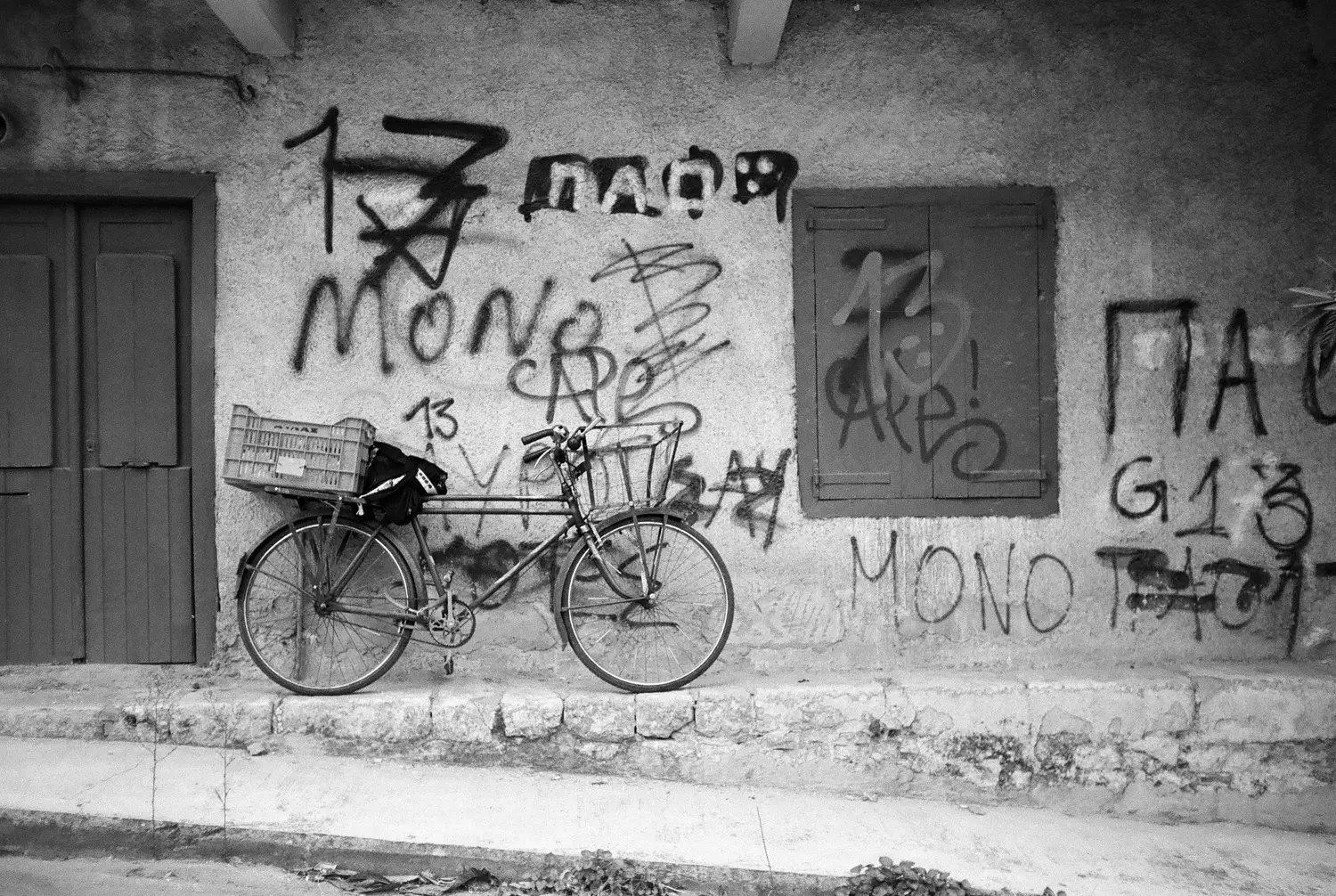
So, is it worth a try?
First of all, the Canon Sure Shot AF-7/8 is cheap. Mine was a freebie but I’m pretty certain it falls well into the “0.99 GBP” category on eBay auctions due to it being widely available and relatively unknown. If you give great importance to ergonomics like I do, then this camera has no equal, esp. at that price range. Fantastic VF, a simple mode dial controlling everything, permanent flash off capability, cheap batteries, fast (if simple) AF, minimal shutter lag and a very decent (if a bit slow) 35mm lens, all make up for a really great daylight street shooter and one of my favorite P&S.
There are some limitations exposure-wise, but using the right negative film under the right lighting conditions can easily overcome them, letting the photographer enjoy a film compact which is great fun to use but can also deliver great results.
Thanks to all for reading my review and to Hamish for hosting it on “35mmc”. Please feel free to comment or ask any questions in the comments section below.
Share this post:
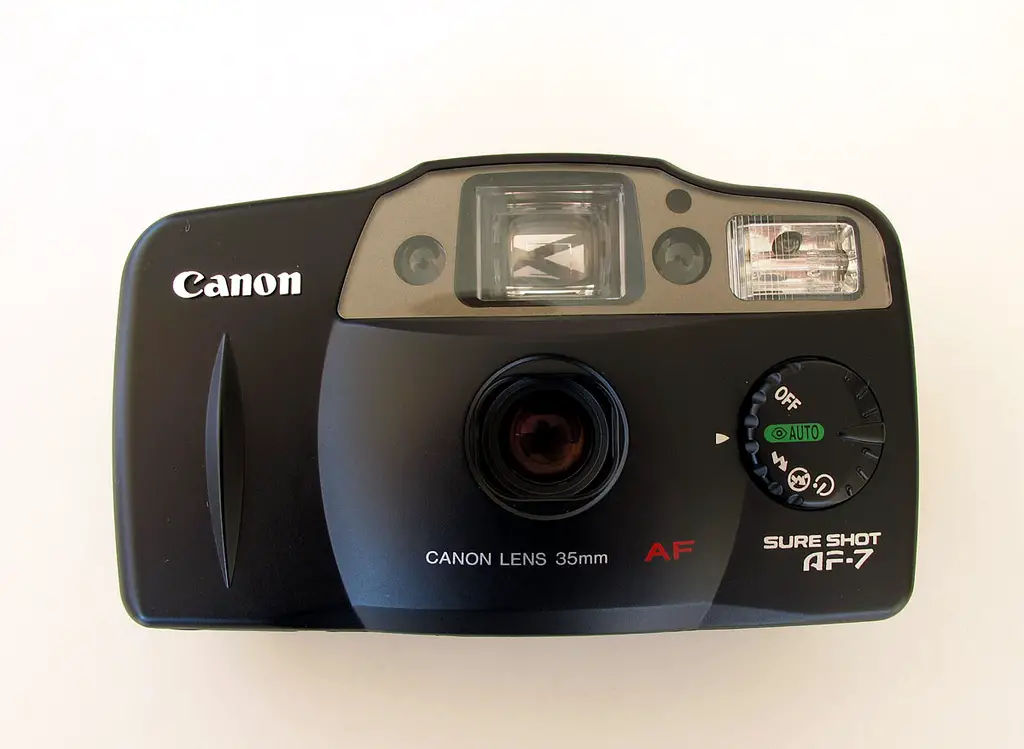








Comments
Hamish Gill on Canon Sure Shot AF-7/8 Review – Simplicity is fun – by Christos Theofilogiannakos
Comment posted: 11/06/2016
Comment posted: 11/06/2016
Comment posted: 11/06/2016
Comment posted: 11/06/2016
Comment posted: 11/06/2016
Frank Lehnen on Canon Sure Shot AF-7/8 Review – Simplicity is fun – by Christos Theofilogiannakos
Comment posted: 11/06/2016
Flash always off an no squinty viewfinder made it for me.
Ok, it's a whirr whizz clack camera, something I really don't like but I might change my mind.
Let's see when this thing turns up....
Comment posted: 11/06/2016
Comment posted: 11/06/2016
Comment posted: 11/06/2016
Comment posted: 11/06/2016
Blinx on Canon Sure Shot AF-7/8 Review – Simplicity is fun – by Christos Theofilogiannakos
Comment posted: 11/06/2016
Comment posted: 11/06/2016
Elias Rangel on Canon Sure Shot AF-7/8 Review – Simplicity is fun – by Christos Theofilogiannakos
Comment posted: 11/06/2016
Unfortunately my AF-7 might have developed fungus on the lens. I have yet to find some disassembly instructions for it.
Comment posted: 11/06/2016
Comment posted: 11/06/2016
Dan James on Canon Sure Shot AF-7/8 Review – Simplicity is fun – by Christos Theofilogiannakos
Comment posted: 13/06/2016
I had one of these Canons, and the viewfinder is indeed brilliant, and that mode dial is great. The waterproof Sure Shot A-1 and the Sure Shot Classic 120 also share a similar dial, so kudos to Canon for using this with some of their Sure Shots instead of fiddly buttons.
I also have a Minolta AF50 Big Finder, which lives up to its name and from memory I think is comparable in size and clarity to the Canon. Looking through it you almost forget you're using a compact, and the Minolta overall is even smaller than the Canon.
Ultimately I decided to sell the Canon and keep the Minolta as the 27mm lens was more unusual than the Canon's 35mm (you know how many 35mm lensed compacts I have!) plus the Minolta also had a more interesting character to the photographs, in my experience with them both.
Having said that, as always, you've created some really impressive images with the Canon. I like how the x-pro shots add more contrast and character, without being too extreme or altered in the colours.
Oh and thanks for the mention re the mju ii! I had one for a while but lost count of how many times I nearly dropped it. I can't ever recall dropping another compact. I really don't understand why more people don't struggle with the small size and slippery ergonomics. Maybe mine had a very well used and extra smooth cover!
Comment posted: 13/06/2016
Comment posted: 13/06/2016
russell swann on Canon Sure Shot AF-7/8 Review – Simplicity is fun – by Christos Theofilogiannakos
Comment posted: 13/06/2016
Comment posted: 13/06/2016
Frank Lehnen on Canon Sure Shot AF-7/8 Review – Simplicity is fun – by Christos Theofilogiannakos
Comment posted: 18/06/2016
I got my AF-7 (or 8) today and the first thing that came to my mind when I put it to my eye was..... what if I could wrench this finder out of it, draw 50mm framelines in it, glue a flash shoe to it and stick it on my Leica IIIa...
First viewfinder I met that got me an easy, unobstructed view with my glasses.
Would that be possible???
Frank Lehnen on Canon Sure Shot AF-7/8 Review – Simplicity is fun – by Christos Theofilogiannakos
Comment posted: 18/06/2016
Comment posted: 18/06/2016
Comment posted: 18/06/2016
Comment posted: 18/06/2016
Lawrence on Canon Sure Shot AF-7/8 Review – Simplicity is fun – by Christos Theofilogiannakos
Comment posted: 20/07/2016
Blinx on Canon Sure Shot AF-7/8 Review – Simplicity is fun – by Christos Theofilogiannakos
Comment posted: 23/08/2016
Joe Baker on Canon Sure Shot AF-7/8 Review – Simplicity is fun – by Christos Theofilogiannakos
Comment posted: 12/01/2017
Neil on Canon Sure Shot AF-7/8 Review – Simplicity is fun – by Christos Theofilogiannakos
Comment posted: 07/02/2017
about 11 years old. I'd only ever shot a couple of rolls of film with it as I was a child with no money! I recently found the camea in a drawer in my parents house and began to do some research about it and came across this blog post. Thanks for the info! Can't wait to try it again.
Yorgos Papaioannou on Canon Sure Shot AF-7/8 Review – Simplicity is fun – by Christos Theofilogiannakos
Comment posted: 18/05/2017
Comment posted: 18/05/2017
A 35mm Accessory Viewfinder for the Budget Conscious / The Wonders of 3D Printing - 35mmc on Canon Sure Shot AF-7/8 Review – Simplicity is fun – by Christos Theofilogiannakos
Comment posted: 01/07/2018
Mark on Canon Sure Shot AF-7/8 Review – Simplicity is fun – by Christos Theofilogiannakos
Comment posted: 07/07/2019
Thanks,
Mark
Comment posted: 07/07/2019
David Usher on Canon Sure Shot AF-7/8 Review – Simplicity is fun – by Christos Theofilogiannakos
Comment posted: 13/05/2021
As this is the MMC site I will mention the digital camera I acquired. A Samsung WB690 12 megapixel compact. Works great with the Pixl-Ltr especially for 120 film negatives. Even reverses the image in camera.